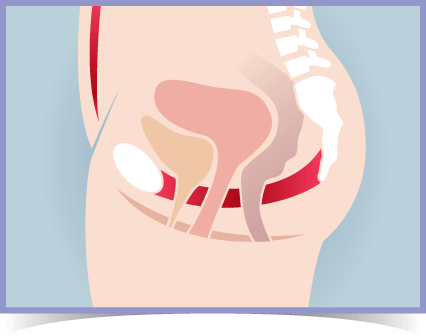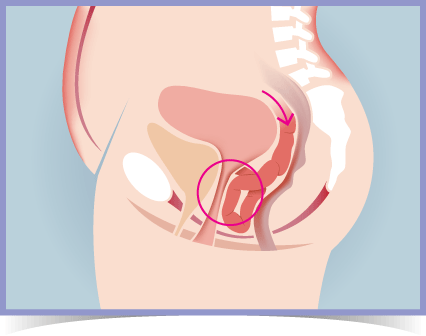Vaginal Prolapse and Vaginal Vault Prolapse
Muscles, ligaments and skin in and around the vagina support and hold pelvic organs and tissues in place. This complex network includes the skin and muscles of the vagina walls. Parts of this support system may eventually weaken or break causing a vaginal prolapse. A vaginal prolapse is a condition when organs such as the uterus, rectum, bladder, urethra, small bowel, or the vagina itself may begin to prolapse, or fall out of their normal positions.
There are many types of vaginal prolapse:
- Cystocele (bladder prolapse)
- The bladder may prolapse into the vagina; the urethra can prolapse as well. A urethral prolapse is also known as an urethrocele. When both the bladder and urethra prolapse together this is a cystourethrocele.
- Rectocele (rectal prolapse)
- A prolapse of the back wall of the vagina (rectovaginal fascia) the rectal wall pushes against the vaginal wall, creating a bulge.This bulge may be more noticeable during bowel movements.
- Enterocele (small bowel prolapse or herniated small bowel)
- Weakening of the upper vaginal supports can cause this prolapse. This prolapse happens when the front and back walls of the vagina separate, allowing the intestines to push against the vaginal walls.
- Prolapsed uterus (womb)
- Weakening of the uterosacral ligaments at the top of the vagina causes the uterus to fall. Often both the front and back walls of the vagina to weaken as well. If the entire uterus protrudes entirely outside the vagina this is called procidentia, or complete prolapse.
- Vaginal vault prolapse
- May occur following a hysterectomy (15%). The uterus provides support for the top of the vagina. In vaginal vault prolapse, the top of the vagina gradually falls toward the vaginal opening; the vaginal walls will also weaken. Eventually, the top of the vagina may protrude out through the vaginal opening.
Healthy Pelvic Floor

Example of an Enterocele

Sadly, many women who develop symptoms of a vaginal prolapse do not seek medical help because of embarrassment or other reasons.
What can be done about vaginal prolapse?
- Use a Kegel8 Ultra 20 Electronic Pelvic Toner to help strengthen the muscles of the pelvic area and prevent further worsening of the vaginal prolapse (and other pelvic organ prolapses)
- Wear a vaginal pessary for added support
- Make lifestyle changes – lose weight if you need to, avoid straining and coughing
- Surgery




